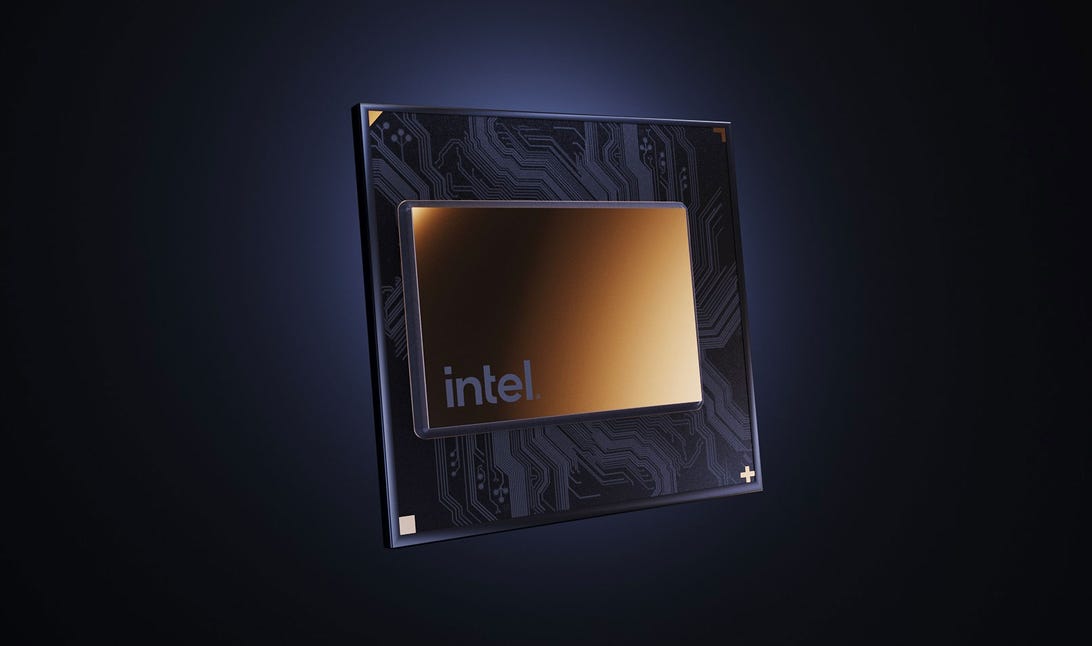
Intel is designing a custom chip to mine bitcoin and other cryptocurrency.
Intel
Intel later this year will begin selling a chip customized to mine bitcoin and other cryptocurrencies, the company said Friday. Initial customers include payment processor Block (formerly Square) and two mining companies, Argo Blockchain and Griid Infrastructure.
It’s a major bet for the company on a technology that could change finance and, with a cryptocurrency-related idea called NFTs, alter how we own digital assets. Cryptocurrencies and NFTs are plagued by fraud and theft problems, but Intel hopes to address another major drawback, their extraordinarily large energy consumption.
With cryptocurrencies, mining is a computationally taxing process that records transactions onto a widely shared database called the blockchain. The first miner to solve a complex computing problem is rewarded with newly minted cryptocurrency. That means there’s a strong incentive to have the most powerful machines — and also the most efficient, since electrical power costs are heavy.
One of Intel’s top rivals, graphics-chip maker Nvidia, has profited handsomely from cryptocurrency mining. Indeed, miners’ appetite for its graphics processing units (GPUs) has made it hard for gamers to find graphics cards. But major suppliers of cryptocurrency mining hardware, like Goldshell, MicroBT and Bitmain, use processors called application specific integrated circuits (ASICs) customized for mining.
Cryptocurrency mining uses gargantuan quantities of power, with a current estimated rate of 125 terawatt hours per year, according to an estimate by Cambridge University’s Bitcoin Electricity Consumption Index. For comparison, that’s as much as the 2020 electricity consumption of Norway, a nation with 5.5 million people, according to the Energy Information Administration (EIA).
And that doesn’t even include mining other cryptocurrencies like ether and dogecoin.
Intel hopes its chip will help with the energy consumption problem.
“We are mindful that some blockchains require an enormous amount of computing power, which unfortunately translates to an immense amount of energy,” said Raja Koduri, the senior vice president in charge of Intel’s Accelerated Computing Systems and Graphics Group, in a blog post. “Our customers are asking for scalable and sustainable solutions, which is why we are focusing our efforts on realizing the full potential of blockchain by developing the most energy-efficient computing technologies at scale.”
An efficiency boost may help miners cut costs and reduce power consumption that worsens global climate crisis problems and deprives others of affordable power. But don’t expect a radical improvement in the environmental impact of mining.
That’s because cryptocurrency’s prevailing “proof of work” approach means the difficulty of the computing problem miners must solve increases as more computing horsepower arrives to solve it. That’s in stark contrast to conventional computing, where power and efficiency gains means computers can deliver better video game graphics, tackle new challenges like artificial intelligence, and expand to new markets like smartwatches.
And ASICs by their nature are designed for a specific purpose, which in the case of cryptocurrency miners means they’re useless once they’re superseded by new models. Right now bitcoin mining generates electronic waste at a rate of 31,000 tons per year, according to Digiconomist’s Bitcoin E-waste Monitor.
